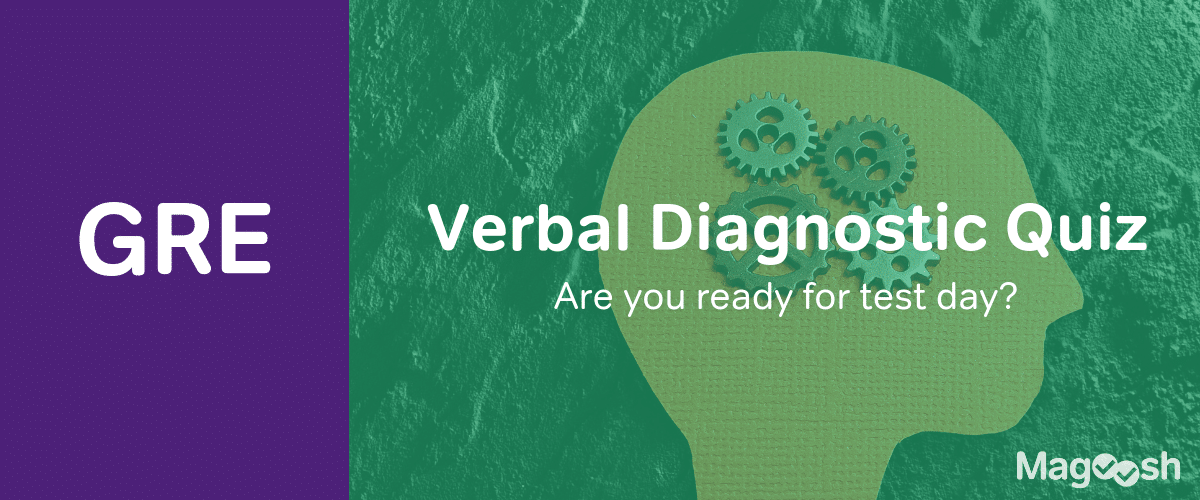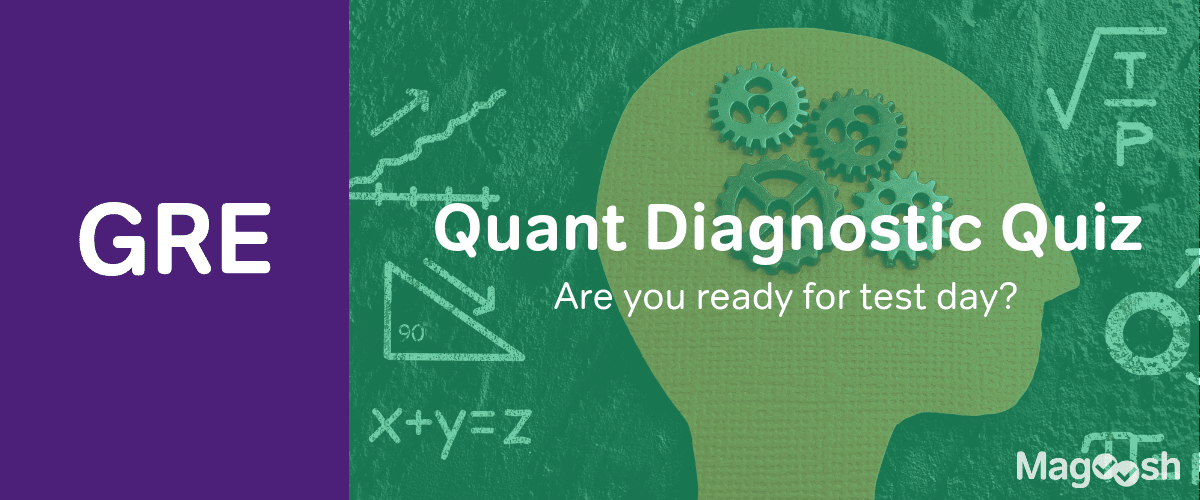
Before we embark, take a look at the following:
Downtown Greensborough is a major financial center in which many citizens either drive or rely on public transportation to get to work. This setup has led up to a spate in the number of pedestrians who have been struck and killed by vehicles. In an effort to curb the number of pedestrian-related fatalities, Greensborough has installed speed reduction signs at the six city intersections at which the highest numbers of fatalities have occurred in the last year. The Greensborough city government predicts that the number of traffic fatalities will significantly decrease once the speed reduction signs have been installed.
The above is your typical GRE paragraph argument and just another example of how the new GRE is hard. It contains a little background information (the traffic/pedestrian situation in Greensborough) before launching into the argument proper. A good first step is to identify the parts of the argument and simplify the paragraph to manageable sentence or two.
Taking apart the argument
The first part of an argument is the premise(s). Think of the premises as the facts. In the paragraph argument above the fact are as follows:
1) Greensborough has many pedestrian fatalities in its bustling downtown area
2) Signs warning motorists to slow down will be installed
3) The signs will be installed only at the six most dangerous intersections
Now that we’ve identified the premises, we want to find the conclusion. The conclusion is a definitive statement that is based on the premises. That is the author of the paragraph argument is not whipping the conclusion from thin air. The conclusion is based on the premises, and almost always comes at the end of the paragraph.
Conclusion: once the signs go up, the number of pedestrian deaths will go down.
In the Paragraph Argument on the GRE, the conclusion is never airtight. What I mean is that the conclusion does not connect perfectly to the premises—there are some holes, or logical gaps. One way to identify them is by using “What ifs”.
For instance:
What if motorists never look at the traffic signs?
What if the signs aren’t prominently displayed?
What if drunk drivers were responsible for most of the fatalities? (That is I don’t think we can rely on drunk drivers to slow down because a sign tells them to).
The “holes” above are quite obvious. On the GRE, the correct answer will be more subtle, and will probably not be similar to one of the “What ifs” you come up with. Nonetheless, it is a good practice to start generating these “What ifs” to get you in the mindset to identify the correct answer.
See, some of the wrong answer choices are going to be very tempting. But none of them is going to directly attack the validity of the conclusion the way the correct answer does. Now that we’ve done the “What if” exercise, let’s actually turn this into a bona fide question.
Downtown Greensborough is a major financial center in which many citizens either drive or rely on public transportation to get to work. This setup has led up to a spate in the number of pedestrians who have been struck and killed by vehicles. In an effort to curb the number of pedestrian-related fatalities, Greensborough has installed speed reduction signs at the six city intersections at which the highest numbers of fatalities have occurred in the last year. The Greensborough city government predicts that the number of traffic fatalities will significantly decrease once the speed reduction signs have been installed.
Which of the following, if true, most undermines the validity of the conclusion?
(A) Some of those who drive to work in downtown Greensborough do not have a valid driver’s license.
(B) The number of annual pedestrian fatalities outside the downtown area is far less than in the downtown area.
(C) The six intersections in which the signs are installed are responsible for only a fraction of pedestrian deaths.
(D) The new speed reduction signs will be in neon orange and prominently placed.
(E) Red light cameras, which are used to catch motorists running red lights, were installed yet the number of pedestrian fatalities did not decrease.
Solution
I’m guessing at least two—if not three—answer choices jumped out at you. A couple you were probably able to eliminate because they were either irrelevant to the paragraph or actually strengthened, not weakened, the conclusion.
Let’s first start with (A) and ask ourselves “What if?”. That is, what if some of the drivers do not have drivers licenses? Is that going to prevent the installation of traffic speed reduction signs from having their desired effect? You could answer ‘maybe’—as in maybe those who drive without a license are in general more dangerous drivers and will therefore outright ignore the signs. The correct answer on a GRE Paragraph Argument is not a ‘maybe.’ It is always a very strong ‘yes’; if A, then the plan will most likely not work.
With (B), we are talking about a part of town that is outside the downtown area. This shift in focus already makes this answer choice suspect (test prep books usually call such a shift ‘irrelevant’ or ‘out of scope’). Maybe the area outside has traffic reduction signs, maybe it doesn’t, maybe a lot of things. As with all ‘maybes’ on the Paragraph Argument, eliminate.
Now for (C): What if the six intersections in which the signs are installed are responsible for only a fraction of the pedestrian deaths? Sure, the intersections are the most dangerous, but if there are hundreds of intersections, then the aggregate fatalities from those intersections will easily surpass that of the six intersections. In other words, even if the signs actually cause a driver to reduce his speed, the plan will still not be effective because people will still be barreling through the ninety-five other intersections. So we asked the “What if?”, and it turns out that the plan doesn’t look like it is going to work: speed reductions signs at six intersections are not going to dramatically lower the number of pedestrian fatalities. Therefore, the answer is (C).
(D), if anything, strengthens the argument, because if the speed reduction signs are obvious drivers are more likely to slow down. Definitely not a “slam dunk” strengthen, but clearly (D) does nothing to weaken the conclusion.
Finally, (E), which may have been the most tempting of the wrong answer choices. Indeed you may be thinking the following: If red light cameras didn’t slow down drivers, then will traffic reduction signs actually bring about the desired effect? The problem is red light cameras weren’t intended to slow down drivers, but rather to catch them in the act of running a red light. The traffic cameras could very well cause drivers to speed up, because they want to make the red light and “beat” the camera (I’ve actually been guilty of this more than once!).
Remember that the GRE is attempting to test your ability to question an argument. This is an especially useful skill to have if you’re studying the GRE for a PhD and you’ll have a dissertation to defend someday.
Coming soon
In the next series, we will go through different question types—Strengthen, Paradox, etc.—and see how what we learned about the “holes” in the argument will pertain to these other question types.






Leave a Reply